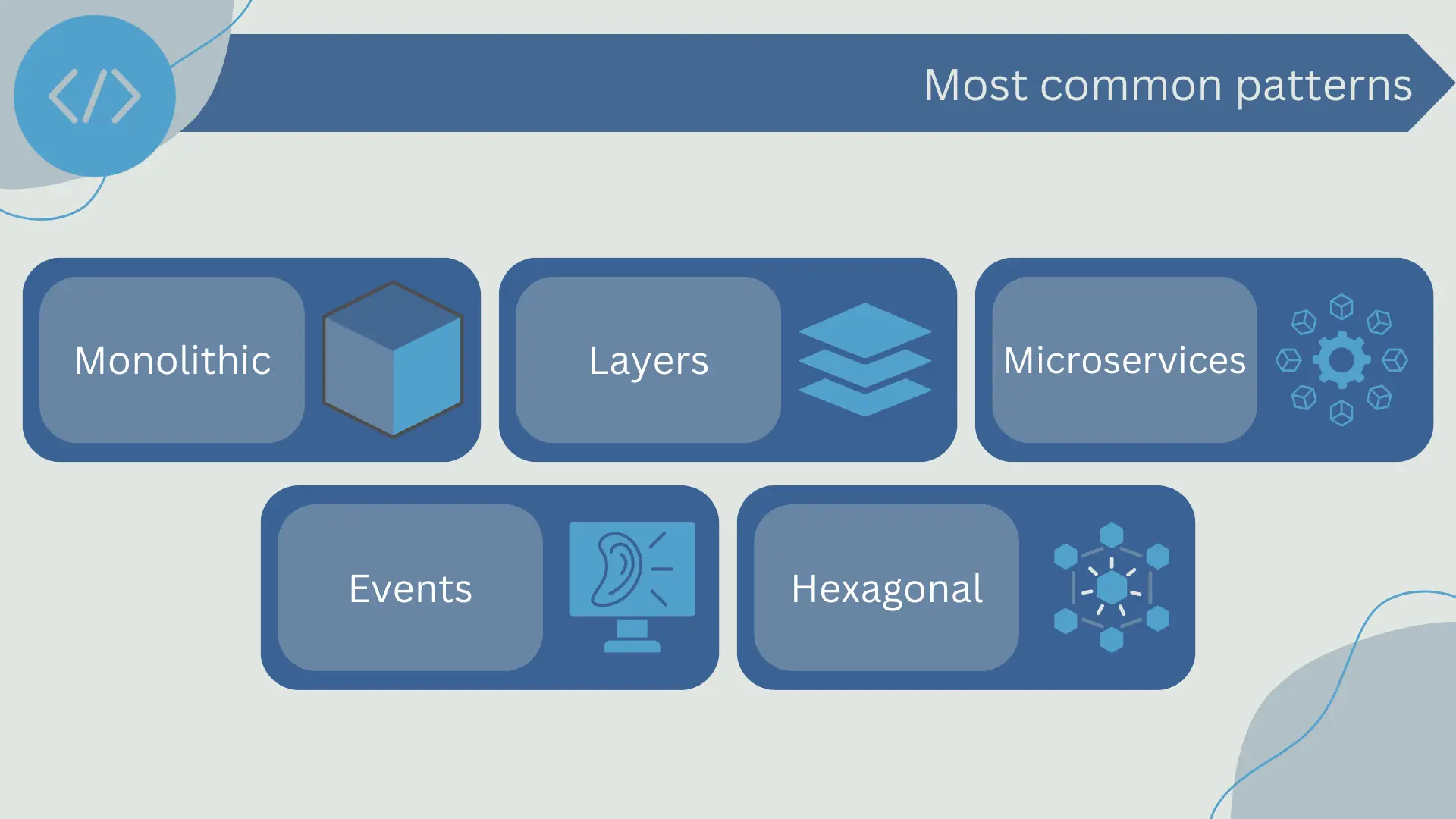Software architecture patterns represent an essential practice in the development of large-scale and robust software systems. A software architecture pattern is a high-level description of a solution to a design problem that frequently occurs in our work environment. These patterns are essentially templates that help architects and developers make critical design decisions based on the project's needs and requirements.
They emerge from proven and tested solutions to common and recurring problems encountered in software design. Like a blueprint, they provide a standard scheme that can be followed to solve a particular problem in a way that has been tested and refined over time by industry experts. Therefore, they are not arbitrarily invented but discovered through experimentation, adaptation, and continuous improvement.
Introduction to software architecture patterns
A software architecture pattern is a reusable general solution to a common problem that occurs in a given software design context. You can think of these patterns as templates for how to approach certain problems. A good architecture pattern not only describes a solution but also the context in which that problem arises and the pros and cons associated with that solution.
Architecture patterns are primarily used to describe the high-level structures of software systems. They are an effective way of conveying expert knowledge to less experienced individuals, serving as a guide in designing and constructing software architecture. Architecture patterns are generally conceived as domain-independent descriptions, in the sense that they describe a design mechanism that is useful in multiple software domains.
Software architecture patterns are used to:
- Solve common software design problems. This is done by providing a way to divide the system into subcomponents and specify the responsibilities of those subcomponents and their interactions.
- Improve communication among team members by providing a common language.
- Make the system more maintainable and flexible by choosing the right pattern for the appropriate problem.
- Capture the experience of designers and software architects so that it can be shared with others.
It should be noted that not all patterns are suitable for all situations, and a pattern applied incorrectly can have a negative impact on the quality of the system. Therefore, it is crucial to thoroughly understand each pattern and its applicability before implementing it. Additionally, the choice of pattern can influence the effectiveness of the software architecture, whether in its performance, security, ability to adapt to future changes, and other aspects.
Over the years, various architecture patterns have been documented, some of which are widely accepted and used in the software industry. In the following sections, we will discuss some of the most common architecture patterns, such as layered architecture, microservices, and event-driven architecture.
Most common patterns description
Software architecture has evolved considerably over the decades, and as a result, several architecture patterns have been established. Each pattern has its own merits, challenges, and applicability depending on the context of the problem being addressed. Here, we will focus on describing some of the most common and widely used software architecture patterns in the industry:
- Monolithic Architecture: In a monolithic architecture, all software is built as a single, cohesive component. This model is relatively simple to develop and test and works well for small to medium-sized applications. However, it can become complex and difficult to maintain as the application grows, and it is not as scalable or resilient as some other patterns.
- Layered Architecture: Layered architecture, also known as tiered architecture, is one of the most common architecture patterns. In this pattern, the software is organized into layers, each with a specific responsibility. The layers interact with those immediately above and below them, creating an orderly and manageable system. A typical example of layered architecture is the web development stack, which includes a presentation layer, a business logic layer, and a data access layer.
- Microservices: The microservices pattern is an architectural approach where a single application is developed as a set of small services, each running in its own process and communicating through lightweight mechanisms, often an HTTP/REST API. Each microservice is independent and can be deployed, operated, updated, and scaled without affecting the others.
- Event-driven Architecture: Event-driven architecture is an architectural pattern that allows different parts of an application to receive and respond to events. In this pattern, event producers publish events representing state changes, and event consumers react to those state changes. This pattern is particularly useful in situations where tasks are triggered in response to state changes and can efficiently handle high workloads and traffic fluctuations.
- Hexagonal Architecture: Hexagonal architecture is a pattern that aims to create a decoupled system that is easily adaptable to changes. The idea is that the business logic (the core of the application) interacts with code that has side effects (such as the database, user interface, third-party services, etc.) through defined abstractions (ports). These abstractions are implemented at the system's edge (adapters), which means that the core of the application is not dependent on any specific technology or infrastructure.

Each of these software architecture patterns has advantages and disadvantages that make them more suitable for some types of projects than others.
